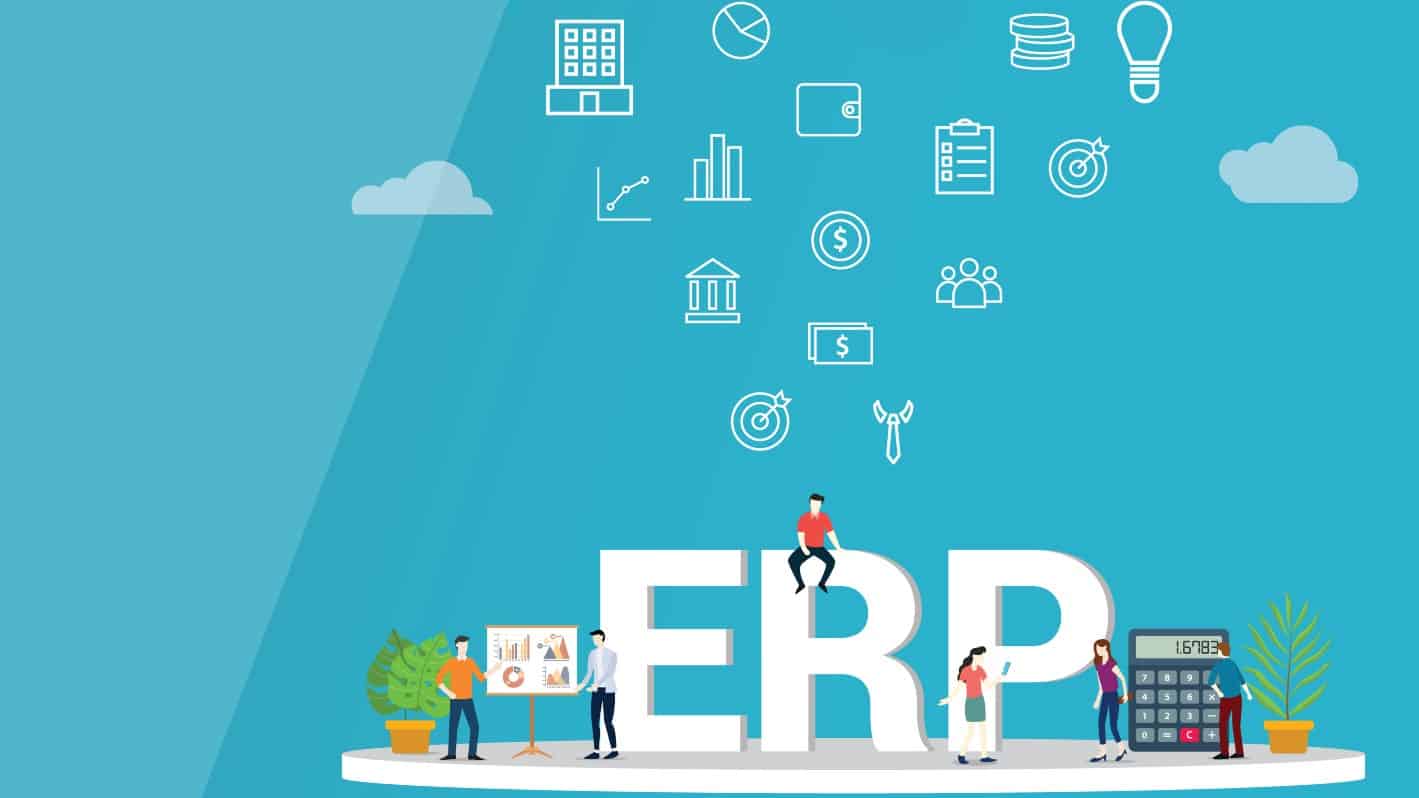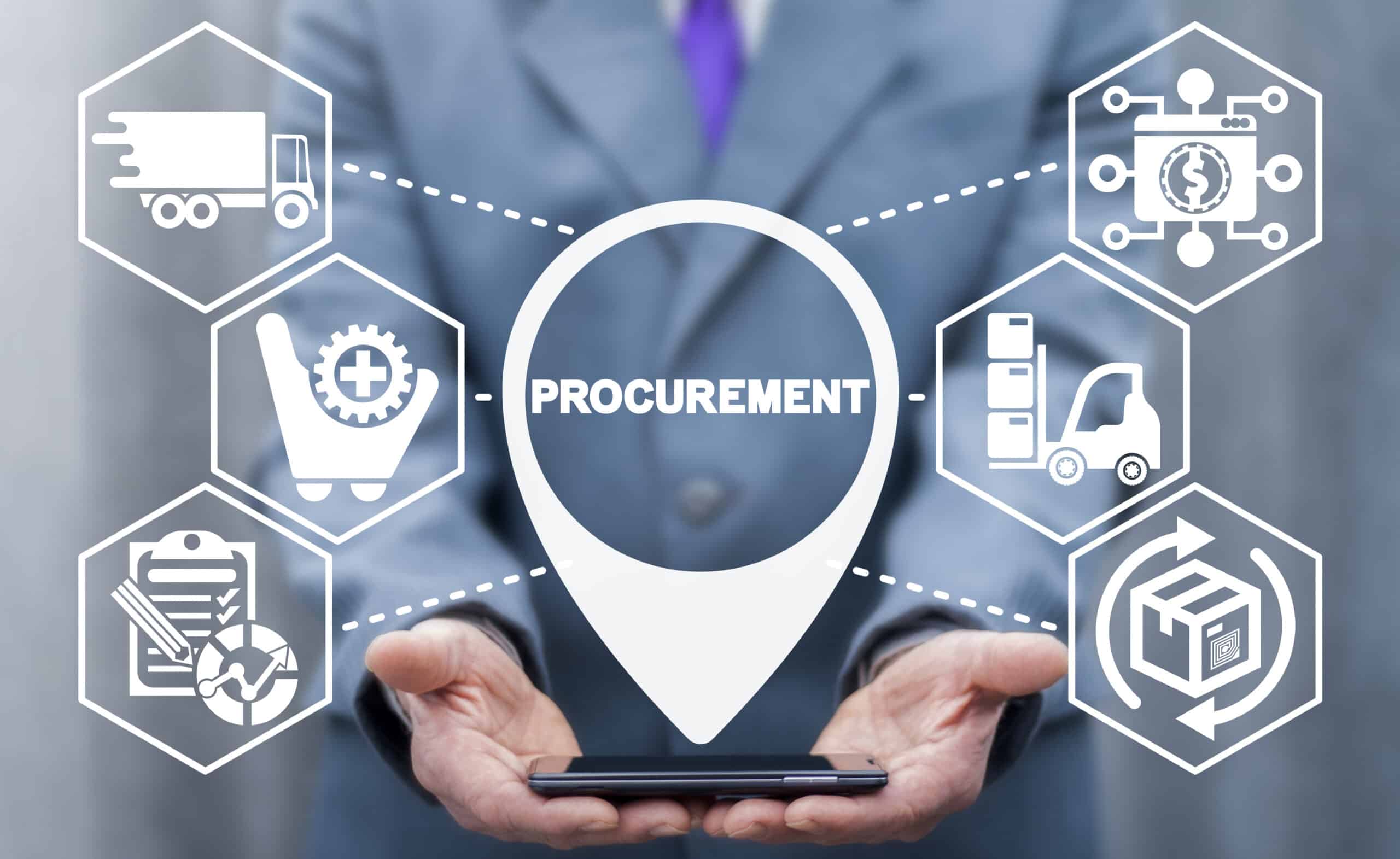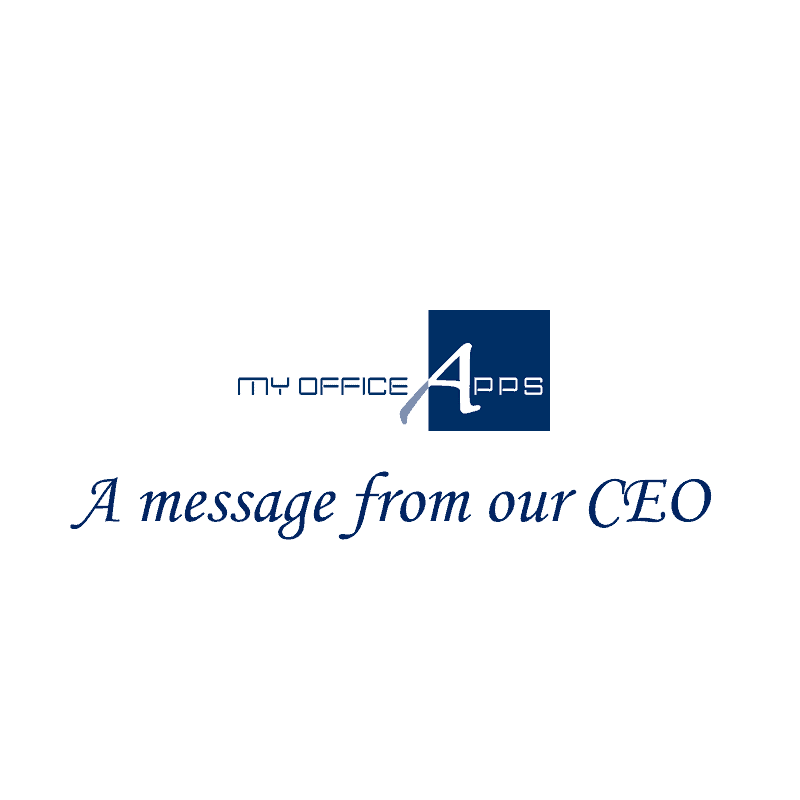How to Improve Inventory Management in Shopify
Why Your Shopify Store Needs an Inventory Management Solution
The COVID Pandemic and eCommerce Growth
2020 was many things, not the least of which the United Nations Conference on Trade and Development called a "turning point" in eCommerce. Across the world, the effects of the eCommerce boom were felt. In the United States, we saw an eCommerce growth rate of a staggering 44% increase from 2019. This growth generated approximately $861.12 billion in online sales. For businesses equipped to handle a large sales influx, there was nothing to be concerned over. Still, for companies working with a patchwork of software or working exclusively with the tools provided by their platform, such as Shopify Inventory, the results can be less advantageous. Experts agree that proper inventory management systems are a critical factor for eCommerce businesses to be successful.
What is an Inventory Management System?
An inventory management system (IMS) is a piece of software that can provide for your company's technological needs while managing all aspects of your inventory. When selecting an inventory management system, growing eCommerce businesses need only ask themselves a few essential questions:
- Scalability: Is the software capable of growing with your store?
- Ease of use: Do you understand all the functions of your inventory management system?
- Reliability: Can you access the system in a way that makes sense to you?
- Technology: Is the system capable of handling the tasks you need it to? Such as reporting, dynamically updated data, and more.
The Dangers of Not Using an IMS
For the many businesses that have found success on Shopify, the need for inventory management grows as their business does. It's easy to see a dropshipping site as easy to manage, but managing inventory can be tricky. If your Shopify store is growing too fast, then monitoring inventory levels, tracking sales, managing vendors, and other tasks will become overwhelming. There is a constant threat of mistakes and errors when not tracking inventory properly. However, an IMS has many significant benefits:
- An IMS can plan and prepare for sudden sales spikes or drops by monitoring trends and referring to historical records.
- Provide increased sales productivity and improve delivery times, allowing your business to give customers a more accurate picture of their deliveries.
- By streamlining operations, you can focus on the more critical functions within the business.
Why Shopify Inventory Management Won't Be Enough
Two factors of an inventory management system can cause significant headaches for eCommerce owners. While it is a top-notch eCommerce platform, Shopify won't
- Automate your ordering and shipping processes
- Help to manage your product variants
Shopify can help with basic eCommerce needs but ultimately relies on third-party developers to offer unique solutions for their users.
For example, business owners should also consider accounting software and Customer Relationship Management (CRM) software to care for and cater to their customers adequately. Shopify does not provide these out of the box. Instead, they have a marketplace with applications and extensions designed to add increased functionality to the platform. This lack of out-of-the-box functionality presents unique challenges for owners who need multiple applications. As you add more applications to manage multiple locations, handle return merchandise authorizations (RMA), and generate financial management reports, the more challenging it becomes. By integrating, synchronizing, and consistently updating an unruly list of software and extensions, you are almost certainly setting yourself up for hardship, if not failure.
What Can Be Done?
Ideally, you would look for an all-in-one solution to help automate the inventory management system, compile various essential reports and improve your business operations overall. While still seamlessly connecting to your Shopify store.
The team at My Office Apps has developed a fully integrated, cloud-based ERP system for Shopify users built to handle all data in real time. The Kechie system is fully integrated with your Shopify store. This allows store owners to take orders from Shopify and update their Kechie system. Any changes made to Kechie will dynamically update the Shopify store. This ensures that Shopify owners are never working with incorrect data.
Additionally, Kechie ERP is an entirely scalable solution, meaning that as the shop grows, so does Kechie. My Office Apps understand that businesses need room to grow, so they've designed Kechie to allow for unlimited transactions of all kinds. Best of all, Kechie is cloud-based, users can access their database from any web browser, a perfect companion for Shopify's Mobile Shop Application. Kechie is more than just an inventory management system; it is a complete business improvement solution.
Contact us today to schedule a demo and see what Kechie ERP can do for your business.
The Difference Between Inventory Management & Inventory Control
Inventory Control and Inventory Management
Similar but ultimately different
Regardless of the industry that your business is in, one of the universal truths of operating a successful business is optimized inventory management and control of inventory. While the terms can seem alike initially, their few similarities become overshadowed by their core functions. This dichotomy isn’t a bad thing. Experts agree that proper inventory management involves inventory control methods; the two must work together to optimize their operations fully. This goal can only be accomplished through accurate inventory management to reap the full advantages of an inventory control system.
The Difference Between Inventory Management and Inventory Control
Let’s try an analogy first. Inventory management is responsible for the broad spectrum of tasks involved in restocking and regulating inventory. Similar to grocery shopping for your family. Ideally, you would purchase for a week or two at a time to not waste any food. While also consider your home’s needs and wants, like a company’s customer base generating supply and demand.
In contrast, you begin to plan meals and put the like items together in the freezer, pantry, and fridge. The process of creating meals and putting the food away is the same as inventory control. Ultimately, it all involves controlling the inventory on hand. At the same time, inventory management is the method of replenishing stock, forecasting supply and demand, along with a broad array of other tasks.
Inventory Control In Different Industries
One of the primary objectives of inventory control is to optimize the items already stocked. One of the advantages of an inventory control system is all about knowing what you have inside and out. Knowing inventory levels, locations, what condition things are in, and much more. All these factors can significantly affect the way manufacturing and distribution companies, in particular, operate.
For example, small to medium businesses can have multiple tiers of inventory such as consumable items like toilet paper and copy paper, raw materials like metal and wood, finished food sale items, and potentially many other forms of inventory based on the business. Distribution companies sometimes use unique categorization for inventory items based on size, color, expiration date, and other factors. Knowing how to group inventory based on different departments’ data gives businesses the edge in this fast-paced, next-day delivery world.
These methods are not exclusive to manufacturers and distributors. Similarly, nonprofit and food-based businesses utilize inventory control methods but with added conditions and parameters. Nonprofit companies are required by law to document nearly every action taken by their business, especially when it comes to their accounting and financing. Providing accurate financial reports for a nonprofit can be a huge hassle. When a nonprofit uses apt control methods, tracking stock and other assets helps optimize the allocation of its limited funding. Additionally, food-based businesses like restaurants and food distribution companies that operate seasonal inventory use different inventory methods for various cost-saving measures. Inventory control, when executed correctly, can provide crucial insight into supply chains and inform every department in a business.
Advantages of Inventory Control System
There’s no doubt that successful businesses employ proper inventory management, but can you accomplish that without a suitable inventory control system? After all, inventory control is all about optimizing the inventory you have in stock. Can you expect your inventory to work for you if you aren’t in control of it? To use another food analogy, in professional kitchens, they use a concept called mise en place, which translates to “everything in its place.” In inventory management, mise en place is inventory control, making sure the inventory is in its place.
Sadly, this is not always the case. Experts have estimated that approximately 43 percent of small businesses don’t track their inventory at all. As a result, they are missing out, to say the least, missing out on potential profit, minimizing waste, and increased customer satisfaction. How does inventory control accomplish those? By integrating with inventory management software. They are two sides of the same coin and genuinely complete one another. By using even simple common sense inventory management and control methods such as FIFO (first-in, first-out) and LIFO (last-in, first-out), businesses of all kinds can operate with total efficiency.
What To Look For
While it can be overwhelming, there are some features that you want to look at regardless of the industry. Those include:
- Automated Tasks: Thanks to modern advances in AI technology, automating various inventory tasks has never been more straightforward. The key to efficiency is ensuring that time-consuming or tedious activities are automating their execution.
- Comprehensive Reports: Inventory management and control work in tandem. Having a robust array of reports will inform you of when things are out of sync and provide a better understanding of day-to-day operations.
- Regular Auditing: By running periodic inventory audits, businesses can identify issues before they become problems.
- Advanced Tracking: Software should aid a business in tracking their products by any categorization they need, by site, location, serial number, lot, date, and more.
- Other Features: These should be based on your industry and include multiple location management, serialization, handheld scanner connectivity, and different software integrations.
Experience the Kechie Difference
At the very heart of the Kechie ERP is the Inventory Management module. A robust piece of software that manages not only the most complex and unruly warehouses but comes fully integrated with other modules to become an overall business improvement system. Kechie is cloud-based, allowing businesses to manage and control inventory from any web browser-enabled device. The team of experts at My Office Apps strives to ensure the success of all our users. Contact us today to schedule a demo and see how we can help improve your business today.
The Consequences of Using Outdated Software
The Consequences of Using Outdated Software
Intuit has decided to ‘sunset’ QuickBooks Desktop 2018 on May 31st, 2021. A regular practice by software providers means they’re discontinuing service for outdated software. In this case, the entire QuickBooks 2018 product line. Including QuickBooks Desktop Pro, Premier, and Accountant 2018.
In an official statement from Intuit, beginning June 1st, 2021, online services accessible through QuickBooks Desktop 2018 will no longer be available, as QuickBooks Desktop 2018 programs will no longer be able to access Intuit servers. As a result, Intuit can no longer guarantee the functionality of any 2018 service associated with their servers, such as license verification, registering 2018 products, retrieving product-license-codes, or product-id-codes. Additionally, add-on services like all versions of QuickBooks Payroll (Assisted, Basic/Enhanced, Full Service) and QuickBooks Payments will no longer be available to Desktop users. Further, the termination of service extends to Third-party add-ons and apps such as Fishbowl Inventory and Avalara AvaTax. Finally, all security updates and tech support tickets are unavailable as Intuit focuses its attention on its QuickBooks Desktop 2021 version.
Why is Intuit doing this?
Updates and ‘sunset policies’ are standard practices for nearly all software companies; Intuit is not the only one that does this. Software updates stem from operating system updates, such as Windows and MacOS, that receive regular updates for various reasons such as security, functionality, and accessibility. Software such as QuickBooks must also update periodically to keep up with the operating system changes, fix bugs in the software, or add minor functionality improvements. Over time, it no longer becomes possible for companies to support older software without affecting the latest version. Thereby, in this case, the more senior software, QuickBooks Desktop 2018, loses support, like the sun setting on the day.
What does this mean for users of outdated software?
When software is in its sunset phase, companies need to act appropriately in the short term and proactively plan for the future. Regardless of the size of your business, this can cause an interruption in your daily business operations. Upgrading to the new version requires buying the latest version and assigning human resources to do the data conversion. Plus, additional training is usually needed to learn the latest version of the software. What is even worse is that it might happen again in a couple of years, so you are stuck in a rat race of regularly chasing the updates. These problems become compounded by any data loss caused by the conversion or data errors.
Updating outdated software
For all the benefits of installing software on your computer, otherwise known as “on-premises” software, the downsides are becoming more relevant with each passing year. On-Premise software only offers certain features out of the box. Additional functionality may not be possible or available for an additional fee. All on-premise software becomes obsolete at one point or another. And the need to upgrade to the newest version or obtain a brand new version of the software is unavoidable. Additionally, issues such as scalability, IT cost, capital equipment cost, and integration problems are just a few of the many potential issues a company can face.
Cloud-based software is becoming the preferred model for businesses that demand more mobility and access on the go. With the software installed on a computer in a set location, mobility ceases to exist.
Additionally, limitations rooted in the software’s functionality create difficult situations for fast-growing companies needing an adaptable and scalable system. For example, if an installed software cannot do something out-of-the-box, companies are forced to use additional software more often than not. As a result, companies can have software redundancies, incompatible file formats, and human error possibilities grow with the number of software and users.
Outdated software is costly
Functionality is not the only issue outdated software possesses. In addition, the cost of the software can be tricky. More often than not, a software provider sells a piece of installed software. For additional fees, they can provide everything from service and technical support to adding functionality and features. As a result, the business ends being nickeled and dimed to death. Adding other necessary components and customizations to make the software work for the existing processes rather than with them.
The other cost that companies must consider is not always easy to quantify. When businesses struggle to get tasks accomplished, revenue becomes lost in wasted time and effort. In turn, these can cause continuous delays can even affect morale. But, when updating outdated software, the process can take weeks causing disruptions to the business operations. The cost of obsolete software is more than just revenue and income; software that requires the user to adjust to it is not how it should be.
Never use outdated software again
Kechie ERP is the business software alternative companies have been looking for. While integrating different software and making a quilt of software to manage inventory, manufacturing and accounting may seem cost-effective. The sum of the parts does not always make a whole. The engineering team at My Office Apps has spent decades working within various industries. This combined with their shared experiences to create a fully integrated system. Allowing us to provide businesses the tools they need to make smarter decisions and build on best accounting practices.
Kechie ERP is more than an integrated ERP system. It instead works with your company’s established processes to improve existing methods. Additionally, Kechie grows with your business as a fully scalable solution that places no limits on users, transactions, reports, and more. Because Kechie is a cloud-native software, you can access your system from any web browser-enabled device and do more on the go while limiting a company’s waste and environmental impact. The best part, you’ll never have to update, upgrade, or backup your data ever again. The experts at My Office Apps have you covered with simple, straightforward support and complete transparency from beginning to end.
Contact us today to schedule a demo and see what Kechie and My Office Apps can do for you and your business.
What is a Fully Integrated ERP?
The Importance and Misconception of ERP
Modern businesses have to adapt to new working environments and regulations, pushing them to operate primarily online. Some companies may take longer than others to conform to the new standard of running a successful business virtually. Most small to medium-sized businesses end up using multiple software to run their businesses.
If you have been working from an on-site office using terminals in a building to install various software on the computer or server, it stays only on-site. Nowadays, many businesses need spreadsheets, web store orders, bookkeeping information, and company emails wherever they go. Taking all this data with you is impossible without a fully integrated Enterprise Resource Planning cloud-based software.

The Benefits of Fully Integrated ERP
Having Enterprise Resource Planning (ERP) software can be less expensive and more productive to various degrees depending on the business and industry. A truly integrated ERP system is built from the ground up. The system becomes integrated by the modules within the software, all communicating with each other. It prevents headaches and helps businesses continue to build a single platform to improve their business operations. Below are some of the differences between the two systems:
| Multi-Software | Fully Integrated ERP |
|
|
|
|
|
|
|
|
|
|
|
|
What My Office Apps Offers
If the software does not communicate, data becomes lost, causing more manual work to recover lost data, taking up the company’s time, money, and energy. 
When software isn’t connecting because of compatibility issues, it shows a company unorganized internally and externally. A fully integrated ERP system allows the manager in the office, the supervisor at home, and the warehouse workers to work together under one software in real-time to improve efficiency and save money.
There is a vast difference between an integrated ERP system and one built off different software packages. Unlike some other ERP systems that are created by acquiring different companies and stitching the software together, My Office Apps has designed and built our software from scratch. The My Office Apps team of developers has over 30 years of expertise in designing and implementing ERP systems. We know this is a better approach for businesses and provides users with the most significant benefits and efficiency when using an ERP system.
Our popular ERP features
- Inventory Management
- Multi-Warehouse Management
- Customer Relationship Management
- Order Management
- Vendor Management
- Production & Manufacturing
- Accounting and Financial Management
The software can process everything from simple tasks to complex data all through any web browser. Kechie ERP can automate your business operations by adapting to your business requirements. Our goal is to offer software with the highest quality, consistency, integration, and ease of use that is scalable and offers advanced features without the higher price tag.
Click here to schedule a demo or contact us here for more information.
Inventory Management Software and the Cannabis Industry
Inventory Management Software and the Cannabis Industry
Cannabis Industry in America
The legality of the cannabis industry is of no small debate in this country. Seventeen states, the District of Columbia, the Northern Mariana Islands, and Guam have legalized recreational cannabis, another 16 have decriminalized its use, and 33 states have some form of medical use. There are plans for federal legalization under the Biden administration, and even late last year, the United Nations, which are famously anti-cannabis, reclassified cannabis. Hence, it no longer shares the highest classification of narcotic drugs. Across the country, legalization efforts are underway by grassroots organizations and local organizers.
Where there is no debate of cannabis's potential is big business. According to CNBC, "the U.S. market opportunity is valued at around $40 billion to $50 billion and expected to grow to $80 billion by 2030 assuming national availability." That's more than double the entire global music industry's value.
Accounting for the Cannabis Industry
Because of the federal status of the cannabis industry, we see multi-million dollar companies conduct transactions almost entirely with cash. Why is that? Because significant credit card companies are unwilling to work with American cannabis companies to process credit and debit cards most of the time. Except for a few more minor direct-to-bank account transaction apps, almost all expenses and company transactions are made with cash; even payroll and federal taxes are paid out entirely in cash.
Limited Specialized Technology
Among the legal problems for the cannabis industry, there is a lack of business tools available for the cannabis business owner. States are still struggling to enact compliance measures. Other software such as ERP, CRM, warehouse, and inventory management tailored to the cannabis industry do not exist the way they do for other businesses. This lack of technology has caused many business owners to pull up their bootstraps and do things a little more old-fashioned. Despite a few cannabis software suites to help cultivators organize their growth, there is no all-in-one solution for cannabis companies.
How Kechie ERP Can Help
When it comes to selecting the right ERP for a cannabis business, there are a few essential features to consider:
- Type and level of responsiveness with customer service
- The amount of configurable and customizable features
- Ease-of-use
- Real-time visibility in all transactions
- Traceability and accountability
- Fully Integrated Cloud-based solution
Fully Integrated Design
All individual modules such as inventory and warehouse management communicate with each other in real-time thanks to our proprietary, fully integrated cloud-based software.
For example, let's say that your head cultivator needs to purchase new seeds, check each greenhouse's inventory levels, and create sales order reports for the last six months. In Kechie, the cultivator can generate purchase orders with your seed vendors, which will allocate money from the designated account. To check the inventory levels, the cultivator won't have to contact anyone but check the Inventory module to get authentic inventory levels in one place. Finally, when generating the sales orders, the cultivator will have several options for creating the reports, by strain, sales type, location, and many more; by pulling data from all available modules to create original and customized reports. These are just three simple examples of the kind of complex business processes made easy with Kechie ERP.
Kechie ERP by My Office Apps also features a Finance module that hits all of those essential boxes, along with other modules. The accounting module features accounts receivable and accounts payable, automated modules designed to reduce human errors significantly. Combined with cash management and general ledger features, allow business owners to pay bills, create purchase and sales orders quickly, and take control of their finances. The accounting module allows business owners to organize their financial statements and track every step of their procurement and sales cycles. Kechie ERP is designed to offer the tools needed to monitor every transaction, with advanced reporting tools that are easily configurable, ensuring accountability for business owners' something lacking in the cannabis industry. The fully integrated system is perfect for cannabis businesses.
Contact Us for More Information
My Office Apps is a different kind of SaaS provider. We partner with cannabis businesses to improve their existing processes, not the other way around. Our software is configurable to your needs, we can customize integrations, and we are constantly working to improve with new features and modules. We offer 30-years of software experience and nearly a decade of cannabis industry experience at your disposal to make your business stand out by operating better by performing beyond your expectations.
Contact us by visiting www.myofficeapps.com to see more of what Kechie ERP has to offer the cannabis industry. Schedule a demo today by emailing us or by calling (714) 486-1487.
RMA’s Can Get Very Complicated
RMA’s Can Get Very Complicated
A Strong ERP Software Can Help Automate RMAs and Make This Process a Lot Simpler
Suppose a customer asks you for a Return Material Authorization (RMA) for an item they want to return. Many transactions need to be made in ERP software to make sure it happens correctly. Many ERP systems may not have all the necessary capabilities to smoothly automate RMAs, which necessitates manual processing for you and your staff.
 Three of the most common types of RMA’s include:
Three of the most common types of RMA’s include:
RMA with Replacement - This type of RMA is where a customer will return an item and requests a replacement for the item once the returned item is received. It is a typical process because a customer indicates that the original article sent was faulty and would like to receive an excellent replacement.
RMA with Cross-Shipment - This case is similar to an RMA with Replacement, except that the customer receives their replacement item before the vendor gets the original back. This RMA process occurs when the customer requires a replacement as soon as possible. Customers typically prefer this type of RMA, but it presents more risk to the vendor if they don’t receive the faulty item back.
RMA for Credit - In this case, a customer wants to send an item they purchased back and only wants a cash refund for their original payment. The customer may have decided they want this for various reasons; such as receiving a faulty part or simply that they did not like the item once they had a chance to see it.
Questions to Ask When a Customer Requests an RMA
- What type of RMA should we process for this customer?
- If the customer requests an RMA for Credit or Cross Shipment, will the vendor approve it? Some vendors have policies that they will only process RMA’s with Replacements for financial reasons.
- If the customer wants a replacement, what happens if the reserve is out-of-stock?
- What happens on an RMA with Cross-Shipment if the customer receives the replacement item but never sends back the original object?
- If the vendor decides to provide a credit for the RMA, will it be a cash credit refund or just a store credit that the customer can use to purchase something else?
- Has the customer paid the original invoice? If not, can the AR balances be adjusted to account for the RMA?
RMA Process Simplified with an ERP System
Processing an RMA can be more complicated and take more time than processing a simple sales order. Suppose an ERP system does not have a sophisticated approach to automation. In that case, it may require multiple steps:
- Issuing a reference number
- Receive back the old part
- Decide whether to put the old part back into inventory or fix it or scrap it.
- Then enter in a replacement order to ship the new part
- Ship the new part
- Figure out any financial debts or credits required for the customer.
Going through all these steps can be pretty cumbersome and more prone to errors with incorrect software. Fortunately, the Kechie ERP software can automate and integrate as many of these steps as possible. When an RMA process beings, the Kechie ERP system will automatically create transactions in the multiple modules. Fully integrated with the sales, finance, inventory, and shipping modules needed to complete the transaction. Your sales staff will not need to re-enter a replacement sales order; the finance staff will not need to generate credit memos; the manufacturing staff will not need to make adjustments for the return parts. Instead, the separate business processes automatically update in the Kechie ERP system.
Contact My Office Apps
If you would like to understand how your RMA process could operate more efficiently and effectively, give us a call. We have business specialists available to evaluate your business and find ways to minimize the costs and maximize our cloud-based Kechie ERP software benefits. Folks on our team understand the importance of automation and have implemented integrated ERP systems for many years. We have been in your shoes; and will leverage our experience to show you the difference a fully integrated ERP software can make in your business.
For more information and advice on how to optimize your RMA process, visit this link. Or better yet, call us at (714) 486-1487. Ask to schedule a demo to show how we can help solve your business issues—both today and tomorrow.
Accounting Software Is Not an ERP and Why You Should Care
Accounting Software Is Not an ERP and Why You Should Care
There are many business software packages available that were initially designed as simple on-premise accounting software packages. While this may have been adequate for a business starting, as the business grows, they find deficiencies that may be causing unneeded extra work and are restraining their growth. For comparison, we will examine QuickBooks, the most popular accounting software, but all accounting software packages will have similar challenges.
A Brief History of QuickBooks
QuickBooks was initially designed over 20 years ago for small to medium business accounting and bookkeeping and not as a full-fledged ERP system. Although it has expanded features since it was developed initially, it does not easily support many essential business functions. These include manufacturing, bills of materials, purchasing, and critical inventory functions such as bar code scanning, eCommerce, lot tracking, multiple warehouses, and purchasing. A common complaint about QuickBooks is that it has limitations on the file sizes it supports and the number of users who can use the software simultaneously. This can be a big problem if a company has many SKUs to track or many employees who need to access the system.
A cloud version was later introduced called QuickBooks Online, but it is not designed to be an ERP replacement. Users have complained that QuickBooks Online supports fewer features than QuickBooks Pro, the on-premises version. Although its accounting functions do have good reports, many of the other parts' reporting capability is relatively weak. Also, companies with large databases report slow load times and occasional system crashes, and system downtime issues.
QuickBooks Issues
QuickBooks does provide the capability to supplement the functionality of their software through the addition of third-party apps that can be obtained through their App Store. However, adding these apps takes extra time and effort for a busy business manager. Integrating the app with the rest of the system may be less than perfect and require outside support resources for implementation and ongoing maintenance.
Another issue is QuickBooks customer support. QuickBooks provides telephone support, but it has been characterized as general and impersonal. This level of support may be acceptable for bookkeeping issues. Still, when a time-critical issue comes up in your business, it is crucial to get fast, accurate answers as soon as possible. If you don't, you may end up losing a customer or make a mistake that could cost your company a lot of money.
The Kechie Difference
Kechie ERP from My Office Apps, on the other hand, has been developed within the past few years from the ground up to be a modern, integrated ERP system that takes into account the business environment and technologies of the 2020s. These days, one of the essential software features is to be based in the cloud using a Software-as-a-Service (SaaS) model. This frees up support resources within an organization since it no longer needs to worry about computer system maintenance, processing software updates, or backing up data. The SaaS model is much more efficient and lower in cost for most companies. Kechie was designed from the start to provide these advantages.
Customers are also looking for a more integrated software system that seamlessly combines functionality from many operating departments. Kechie was designed by people who have significant experience working inside manufacturing companies and understand what functionality is needed in today's business environment. It includes the ability to effortlessly handle important business activities beyond finance tasks, including manufacturing, bills of materials, purchasing, RMA, and essential inventory functions such as bar code scanning, eCommerce, lot tracking, multiple warehouses, and purchasing.
Another critical advantage of Kechie ERP is the personalized support that customers receive. The My Office Apps team is committed to providing the highest quality customer support for Kechie ERP. We see our role as a company that sells software and a business process improvement company that will work closely with you and your team to help you improve your business processes by leveraging the Kechie integrated ERP system.
See What We Can Do For You
Our goal is to provide the best solutions for small and medium-sized businesses using the latest techniques to contribute to our customer's success. If you consider acquiring business management software to help you run your business, make sure that you don't choose something that you will likely outgrow or wasn't initially designed for today's modern business environment. Please take a look at Kechie ERP from My Office Apps and experience the value of getting a more capable system that will have the flexibility to grow with you when you are ready.
You can visit www.myofficeapps.com, or better yet, call us at (949) 486-1947 and ask us to schedule a demo to show how we can help solve the business issues you face both today and tomorrow.
Lower Cost & Improve Deliveries w/a Cloud-based Procurement Management System
Lower Costs and Improve Deliveries with a Cloud-based Procurement Management System
The timely purchase and delivery of goods and services can be a significant challenge for even the best-run organization. Comparing vendors’ quality and on-time delivery, historical purchase prices and volumes, and understanding what parts have extended lead times and are in short supply can significantly impact operational productivity and Cost of Goods Sold (COGS).
Procurement management can help a company save on costs and improve deliveries. It is a business area that too often does not receive the management attention or technology resources it should. Perhaps this is because all businesses need to purchase both goods and services to operate, so it becomes regarded as a standard function that can just run without much supervision, unlike the more exciting areas of product development and marketing.
Yet, a useful procurement function can have a significant positive effect on your business operations. In many businesses, a large portion of their overall costs can come from things that are purchased. Not only is the price you pay vendors important, but choosing the best vendors and tracking their performance is also critical.
Purchasing activities can get quite complicated, and keeping track of what is happening can become a big challenge. Often, the purchasing department gets caught in the middle with pressure from both the company’s internal employees and their outside vendors. The manufacturing department will want faster deliveries of their required components with higher quality and lower vendors’ prices. And all the other departments that purchase items, whether they be goods or services, need their orders cost-effectively fulfilled promptly to accomplish their tasks.
Without a sound procurement system, it is next to impossible to achieve good results. For example, say there are multiple potential vendors for a particular item. A purchasing professional does not have a quick and easy way of tracking the historical performance of those vendors. They may give the order to the first vendor they see on the list. You rely on pure luck that the procurement agent can optimize price, quality, and delivery performance without an automated process.
A reliable procurement module inside of a cloud-based Enterprise Resource Planning (ERP) software system can provide many benefits. It can offer a purchasing history and instantaneously show the vendor, the previous price paid, and vendor delivery performance from past purchase orders. This real-time information can put the purchaser in a better position to select a vendor for the next PO. Also, it can be invaluable when a purchaser is negotiating a price with the vendor. Not only can they see price history of the vendor they are talking to, but they can also see any price history from the vendor’s competitors.
Next, a procurement module also allows a purchasing agent to plan their purchases and automatically track their status so the agent can advise others when the requested items will be delivered. They also have greater visibility when delays occur and can then begin the contingency planning process as soon as possible. The procurement module connects to a Material Requirements Planning (MRP) module in the ERP system, which means that a company can achieve more automation in determining what items need to be purchased and when they need to be delivered to keep the manufacturing operation running smoothly.
Some purchases may require management approval, especially for high-dollar-level purchases. Another advantage a sound procurement system can provide is an automated purchasing requisition and approval process. Instead of paperwork being passed back and forth between different departments and company management, these approvals get sent electronically, saving time and money and providing a useful log of who approved a particular purchase and when they did it.
If you would like to understand how your procurement function could operate more efficiently and effectively, talk to My Office Apps. We have business specialists available to evaluate your business and find ways to minimize the costs and maximize the benefits with our cloud-based Kechie ERP software system. Folks on our team understand the needs of the procurement department and have been implementing integrated ERP systems for many years under all sorts of different situations. We have been in your shoes, and we can leverage our experience to show you how much of a difference a reliable procurement module in an ERP system can make in your operations.
For more information and advice on how to upgrade your management software without it being a significant pain, visit www.myofficeapps.com or better yet, call us at (714) 486-1487 and ask to schedule a demo to show how we can help solve the business issues you face, both today and tomorrow.
Comfort, Peace of Mind, and Transformation for Your Business and Family
Comfort, Peace of Mind, and Transformation for Your Business and Family
Comfort, peace of mind, and transformation for your business and family is my wish for you as I reflect on a year unlike any other in our three decades of software design and development that led to the creation of our transformative business software. I want to first pause and express our heartfelt gratitude to our customers, partners, and all of you who took the time to consider our cloud-based Kechie ERP solution.
I also want to acknowledge the sting we all feel with the inability to gather with family and friends the way we enjoy, especially during the holidays. We have, and I’m sure most of you have suffered losses, whether family members, employees, customers, or business. Please know that you have the support of the entire My Office Apps team in any way we can help you and your business, and you have our deepest sympathy and prayers for healing.
Like many companies, we didn’t hit all the targets I imagined a year ago, but we have had important successes that have sustained us amid the shutdowns and remote work. Because we are a cloud-based solution, all our customers and we could immediately implement remote access to all critical inventory, purchase order, CRM, sales, WMS, logistics, procurement, manufacturing, and financial information. While we never imagined a global pandemic being the driver for the cloud-based digital transformation of manufacturers and distributors, we feel especially grateful for our design decisions when customers tell us Kechie has been a “godsend” in the current remote work environment.
We are in awe of all our customers and the companies that have worked with us over the past year. Thank you for all you’ve contributed to the collective spirit of innovation and perseverance that helps us weather the current conditions.
As we move into 2021, that spirit motivates our mission even more to serve and support businesses like yours. We will continue developing and implementing Kechie ERP to empower and propel your businesses to new heights by maximizing efficiency, strengthening company-wide collaboration, and empowering you to make timely, accurate business decisions. You can count on the team at My Office Apps to deliver a solution tuned to your business and how you need to operate during these challenging times.
And finally, thank you for being a part of our family. It’s my sincere hope that you can spend meaningful time with your loved ones in any way you can and that you get some much-needed relaxation.
Sending you warm wishes this holiday season, and may the new year bring you peace, prosperity, and good health.
Best Wishes,
Mariam Komeili, CEO
See How Meals on Wheels Can Deliver 30,000 Meals a Day in San Francisco
See How Meals on Wheels Can Deliver 30,000 Meals a Day in San Francisco
Meals on Wheels of San Francisco will be able to reach more people than ever before this Thanksgiving. See how an ERP developed by My Office Apps and built on Progress OpenEdge helped them help thousands more.
When we think of Meals on Wheels, we think of homebound senior citizens getting important nutrition they otherwise would go without. But it’s even more than that. Meals on Wheels provides a friendly face and a much-needed check-in to break up the isolation and ensure that everything is OK.
Today, that friendly face is behind a mask, and the challenges of hunger and solitude are even steeper as the COVID-19 pandemic surges into the holidays and winter months.














 Three of the most common types of RMA’s include:
Three of the most common types of RMA’s include:





